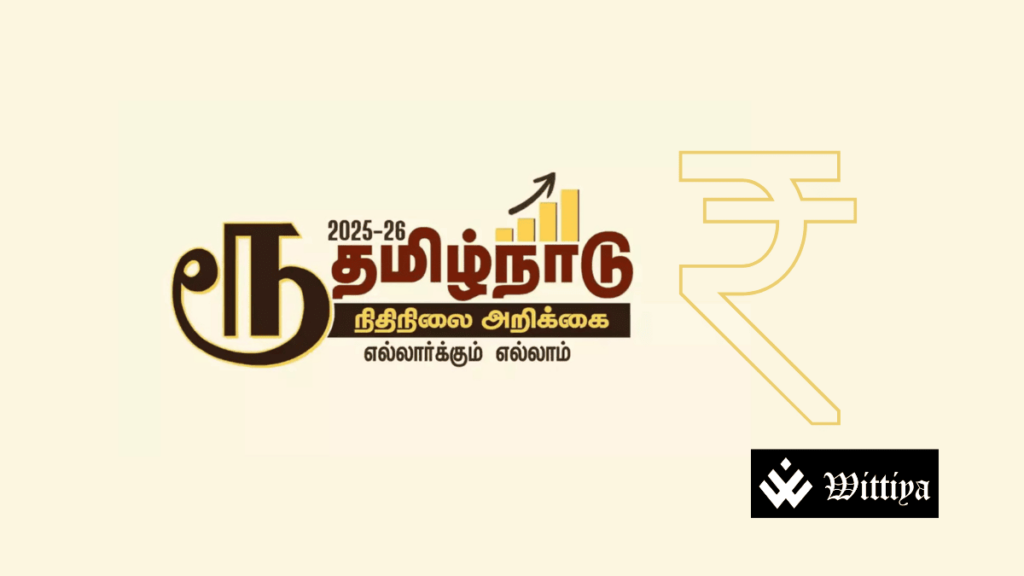The Tamil Nadu government, India, has replaced the official rupee ‘₹’ symbol with a Tamil letter in its 2025 state budget, intensifying the ongoing language dispute with the Centre. The move has sparked political controversy, with BJP Tamil Nadu chief K Annamalai criticizing the decision. The National Education Policy (NEP) and its three-language formula remain at the core of the dispute.
The Tamil Nadu government, led by Chief Minister MK Stalin, has replaced the official rupee symbol ‘₹’ with a Tamil letter in its 2025 state budget. The decision has intensified the ongoing language dispute between the state and the Centre, with political leaders divided over the move.
The new budget logo features the Tamil letter ‘ரூ’ (Ru) from the word ‘rubai,’ replacing the Indian currency symbol that was used in previous budgets. The logo also carries the caption “everything for all,” which aligns with the Dravida Munnetra Kazhagam (DMK) government’s emphasis on inclusive governance. However, the ruling party has not issued an official statement on why the rupee symbol was replaced.
Political Controversy Over Symbol Change
The move has triggered a strong reaction from the opposition, with Bharatiya Janata Party (BJP) Tamil Nadu chief K. Annamalai criticizing the DMK government. He pointed out that the rupee symbol ‘₹’ was designed by a Tamilian, D. Udaya Kumar, and adopted nationwide in 2010.
“The DMK Government’s State Budget for 2025-26 replaces the Rupee Symbol designed by a Tamilian, which was adopted by the whole of Bharat and incorporated into our currency. Thiru Udhay Kumar, who designed the symbol, is the son of a former DMK MLA. How stupid can you become, Thiru @mkstalin?” Annamalai wrote on social media.
DMK leaders have yet to respond to the criticism, but political analysts believe this move is a continuation of the Tamil Nadu government’s long-standing opposition to what it sees as Hindi imposition by the Centre.
Language Policy Dispute and NEP’s Three-Language Formula
The rupee symbol replacement is seen as part of Tamil Nadu’s broader resistance to the Centre’s language policies, particularly the National Education Policy (NEP). The state has consistently opposed the three-language formula introduced under NEP, arguing that it promotes Hindi at the expense of regional languages.
According to the NEP document, the three-language formula aims to “continue to be implemented while keeping in mind the Constitutional provisions, aspirations of the people, regions, and the Union, and the need to promote multilingualism as well as national unity.” The policy also states that no language will be imposed on any state, and students will have the flexibility to choose their preferred languages, provided at least two are native to India.
Impact on Tamil Nadu’s Linguistic Identity
Tamil Nadu has historically maintained a strong stance on preserving its linguistic and cultural identity. The DMK government’s latest move aligns with previous efforts to assert Tamil primacy in the state’s governance and administration. This includes rejecting Hindi as a mandatory subject in schools and promoting Tamil in official documents and policies.
While the ₹ symbol change is a symbolic move, it underscores the ongoing tensions between Tamil Nadu and the Centre over language policies. With the 2025 state budget now reflecting this linguistic assertion, the debate over regional versus national identity is expected to continue.
As Tamil Nadu moves forward with its budgetary plans, the replacement of the ₹ symbol with a Tamil letter remains a politically charged issue. While DMK sees it as a step toward linguistic self-assertion, BJP and other critics argue it is unnecessary and divisive. With no official response from the ruling party yet, the controversy is likely to spark further debate on the role of language in governance.
